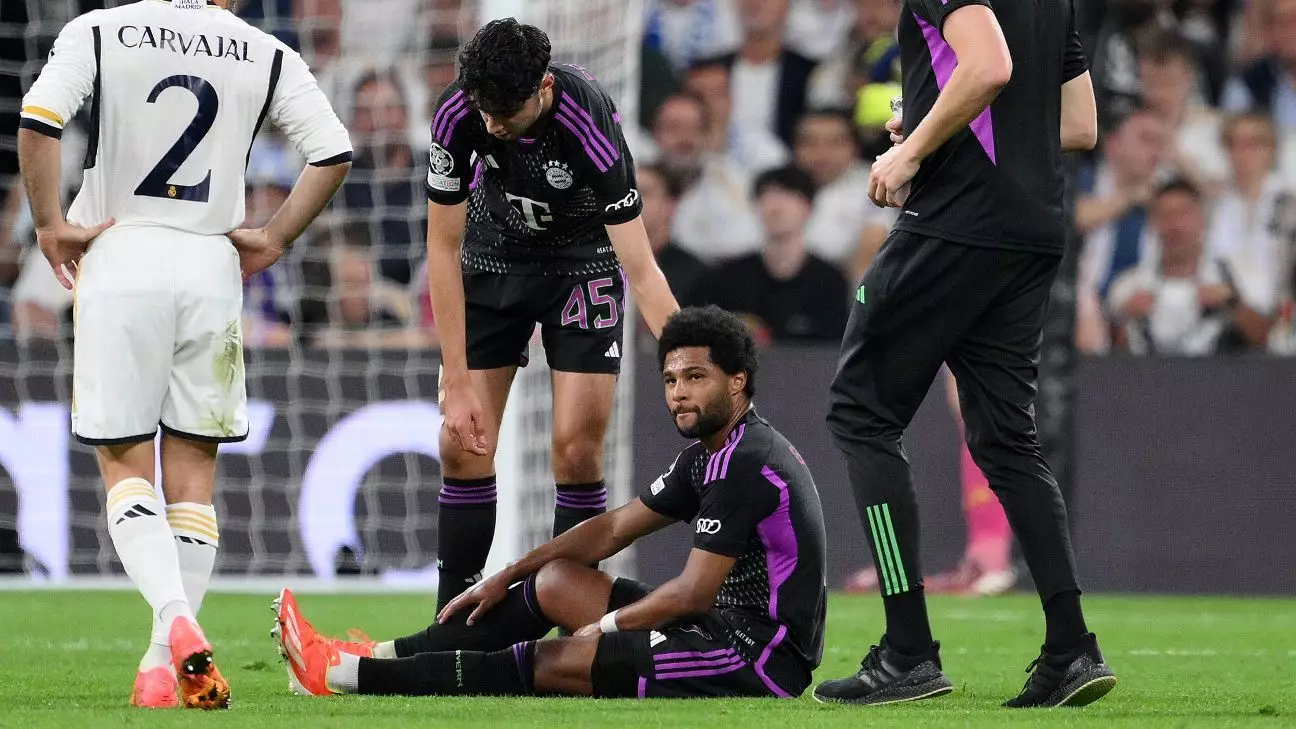Football, often referred to as the beautiful game, is now grappling with a darker reality: a significant increase in player injuries. According to the latest findings from insurance firm Howden’s Men’s European Football Injury Index, the Bundesliga has emerged as the league with the highest injury rates among Europe’s top five domestic football leagues, which also include the Premier League, LaLiga, Serie A, and Ligue 1. The report, covering the 2023-24 season, indicates a troubling trend — Injuries across all leagues have risen 4% compared to last season and a staggering 37% since the 2020-21 season, showing that player welfare has reached a critical juncture.
The financial implications of these injuries cannot be overstated. The report highlights that clubs across the five leagues endured a total loss of €732 million (approximately $797.73 million) last season in wages for players sidelined by injuries. Since the report was first published, clubs have collectively suffered 14,292 injuries, costing a staggering €2.3 billion in lost salaries. The sheer scale of these figures encapsulates the economic impact injuries impose on clubs, many of whom are already navigating complex financial ecosystems exacerbated by the demands of expanded competitions both domestically and internationally.
Increased Workload and Its Consequences
As players are increasingly burdened with substantial match loads due to FIFA’s expanded Club World Cup and UEFA’s restructured competitions, the question of player welfare looms larger than ever. These fresh challenges come on top of already congested domestic schedules. With the physical demands on players intensified, Howden’s report notes a disturbing trend: players, particularly those under 21, are experiencing longer recovery times post-injuries. The average lay-off for young players rose from 26.5 days in the 2022-23 season to 44 days in the current report. This data paints a picture of a worrying future for young talent in football, where development could be hampered by extended absences from the sport.
The Alarming Numbers Behind Injuries
The numbers further elucidate the severity of the situation. In the previous season, an injury was recorded every 92 minutes across the five leagues, equating to a financial cost of €172,975 per game for clubs. Delving deeper, the Bundesliga stood out with an injury occurrence every 52 minutes, leading to dire stints for clubs such as Darmstadt, who faced an injury every 33 minutes. Clubs, including Borussia Monchengladbach, witnessed unprecedented numbers, marking over 100 injuries— a significant data point in the history of this report.
Though the Premier League witnessed a slight decline in injury numbers from 944 in the 2022-23 season to 915 in the current season, it remains the league with the highest financial fallout from injuries, accounting for 44% of all injury costs across the studied leagues. Premier League teams collectively spent €318 million on wages for injured players, with Manchester United facing the harshest repercussions at €39 million for 75 injuries. In stark contrast, although Bundesliga champions Bayer Leverkusen recorded the fewest injuries (36), their substantial rivals Bayern Munich endured 96 injuries, costing them €39 million.
A Call to Action: Advocating for Player Welfare
The increasing number of injuries and associated financial burdens have ignited discussions surrounding player welfare. The players’ union, FIFPRO Europe, along with domestic leagues have cautioned that conditions may lead to strike actions if changes are not implemented. With the data presenting a call for reflection, stakeholders in European football must prioritize the physical and mental health of the athletes who drive the sport.
The data presented in Howden’s report serves as a vital reminder of the pressing need to reevaluate the structure of fixtures and training schedules, aiming to cultivate an environment that prioritizes the health of the players. Football’s stakeholders must band together to confront this escalating issue, paving the way for a more sustainable future that not only ensures competitiveness but also safeguards the careers and well-being of its invaluable athletes.

Leave a Reply